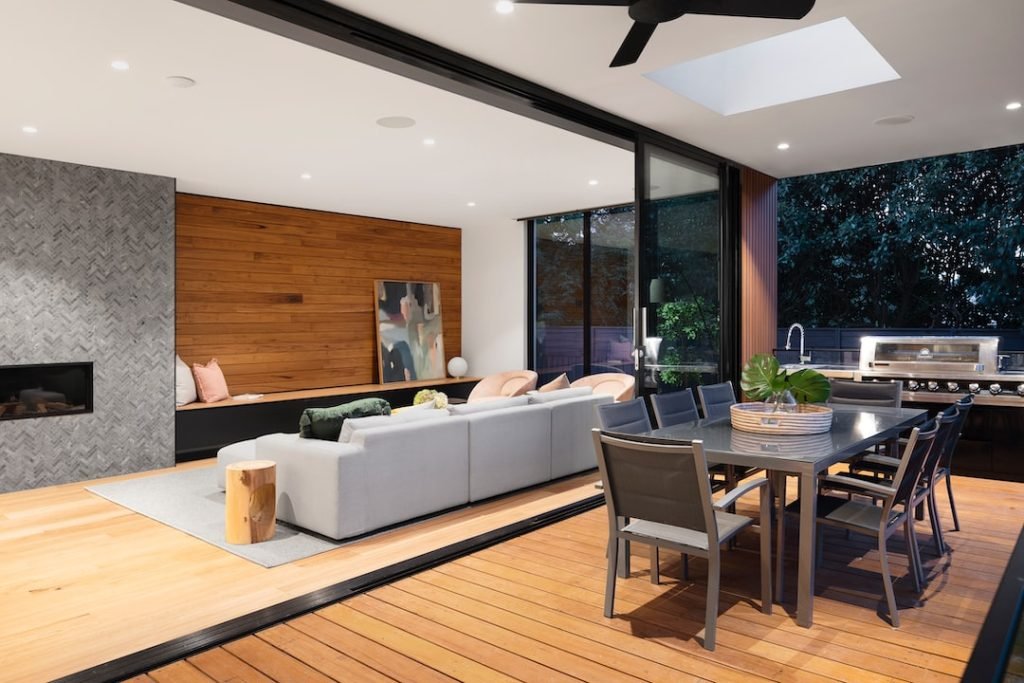

Home Sweet Home: English Vocabulary for the House
Learning vocabulary related to the house is essential for anyone looking to improve their English language skills. Whether you are a beginner or an advanced learner, knowing the words and phrases associated with different rooms, furniture, appliances, and daily routines in a house will greatly enhance your ability to communicate effectively in English. In this blog post, we will cover a wide range of topics related to house vocabulary, including basic room names, furniture and decorations, appliances and electronics, cleaning and maintenance supplies, outdoor and garden vocabulary, household chores and daily routines, common phrases and expressions, role-playing exercises, and tips for incorporating house vocabulary into English classes.
Table of Contents
ToggleBasic Vocabulary for Rooms in the House
To start off our exploration of house vocabulary, let’s begin with the basic rooms that can be found in most houses. These include the living room, kitchen, dining room, bedroom, bathroom, and study or office. Each room serves a specific purpose and has its own unique features. For example, the living room is typically a space where people gather to relax and entertain guests. It often contains comfortable seating such as sofas and armchairs, as well as a coffee table and a television. The kitchen is where meals are prepared and often includes appliances such as a stove, refrigerator, and dishwasher. The dining room is where meals are eaten and usually contains a dining table and chairs. The bedroom is where people sleep and typically includes a bed, wardrobe or closet for clothes storage, and sometimes a desk or vanity. The bathroom is where people take care of personal hygiene needs and usually contains a toilet, sink, bathtub or shower, and sometimes a mirror or medicine cabinet. The study or office is a space where people work or study and often includes a desk, chair, bookshelves, and a computer.
Furniture and Decorations in the House
Now that we have covered the basic rooms in a house, let’s move on to the furniture and decorations that can be found within these rooms. Furniture items commonly found in a house include a sofa, coffee table, armchair, bookshelf, dining table, chairs, bed, wardrobe or closet, desk, and vanity. These items are essential for providing comfort and functionality to a living space. In addition to furniture, decorations and accessories are used to personalize a home and make it feel more inviting. These can include items such as paintings or photographs on the walls, curtains or blinds on the windows, rugs or carpets on the floor, cushions or throw pillows on the sofa or bed, lamps or light fixtures for illumination, and plants or flowers for added greenery.
Appliances and Electronics in the House
Moving on to the appliances and electronics that can be found in a house, these items are essential for modern living and convenience. Common appliances found in a house include a refrigerator for storing food and beverages at a cool temperature, a stove or oven for cooking meals, a dishwasher for cleaning dishes and utensils, a washing machine for doing laundry, and a dryer for drying clothes. Electronics found in a house often include a television for entertainment purposes, a computer for work or leisure activities, a phone for communication, and sometimes a stereo system or speakers for listening to music.
Cleaning and Maintenance Supplies for the House
In order to keep a house clean and well-maintained, it is important to have the necessary supplies on hand. Common cleaning supplies used in a house include a vacuum cleaner for cleaning carpets and floors, a mop and bucket for mopping hard surfaces, cleaning solutions such as detergent or disinfectant sprays, sponges or scrub brushes for scrubbing surfaces, and garbage bags for disposing of trash. Maintenance supplies used in a house often include tools such as a hammer and screwdriver for making repairs or assembling furniture, nails or screws for securing items, and a ladder for reaching high places.
Vocabulary for the Outdoors and Garden

In addition to the indoor areas of a house, it is also important to learn vocabulary related to the outdoors and garden. Common outdoor areas of a house include the backyard, patio, porch, and driveway. The backyard is often a space for outdoor activities such as gardening, playing sports, or hosting barbecues. The patio is a paved area usually located at the back of the house and is often used for outdoor dining or relaxation. The porch is a covered area at the front of the house and is often used as an entrance or for sitting outside. The driveway is a paved area where cars are parked. In terms of garden vocabulary, it is important to know the names of common plants and flowers such as roses, tulips, daisies, and sunflowers, as well as trees such as oak, maple, pine, and palm. Other garden features include a lawn or grassy area, a garden shed for storing tools, and a fence or hedge for privacy.
Household Chores and Daily Routines
Maintaining a house involves performing various household chores on a regular basis. Common household chores include doing laundry, washing dishes, vacuuming or sweeping floors, dusting surfaces, cleaning windows or mirrors, taking out the trash or recycling, watering plants or flowers, and mowing the lawn. In addition to these chores, there are also daily routines related to maintaining a house that should be learned. These can include making the bed in the morning, opening or closing curtains or blinds, turning lights on or off, locking doors and windows when leaving the house, and setting the alarm system.
Common Phrases and Expressions for the House
There are several common phrases and expressions related to the house that are worth learning. These phrases can be used in everyday conversations and add depth to your English language skills. Some examples of common phrases and expressions related to the house include “make yourself at home,” which is used to welcome guests and make them feel comfortable in your house. Another example is “home sweet home,” which is used to express the feeling of comfort and happiness when returning to one’s own house after being away. Other phrases include “home is where the heart is,” which emphasizes the emotional attachment and sense of belonging to one’s own house, and “there’s no place like home,” which highlights the unique comfort and familiarity of one’s own house.
Role-Playing Exercises for Practicing House Vocabulary
To practice using house vocabulary in context, role-playing exercises can be a fun and effective way to reinforce learning. Here are a few suggestions for role-playing exercises:
1. Real Estate Agent: One person can play the role of a real estate agent showing a house to a potential buyer. The other person can play the role of the buyer asking questions about the different rooms, furniture, and features of the house.
2. Roommate Search: Two people can play the roles of potential roommates looking for a new place to live. They can discuss their preferences for different rooms, furniture, and amenities in a house or apartment.
3. Home Improvement Project: One person can play the role of a homeowner planning a home improvement project, such as remodeling a kitchen or redecorating a living room. The other person can play the role of an interior designer or contractor offering suggestions and advice.
Incorporating Home Sweet Home Vocabulary into English Classes and Courses
For English teachers, incorporating house vocabulary into lessons can be done in various ways to engage students and reinforce learning. Here are a few tips:
1. Vocabulary Games: Play vocabulary games such as charades or Pictionary using house-related words and phrases. This will help students practice their speaking and listening skills while having fun.
2. Reading and Writing Activities: Assign reading passages or articles about different aspects of house vocabulary, such as an article about interior design or a short story set in a house. After reading, have students write a summary or answer comprehension questions to test their understanding.
3. Role-Playing and Dialogues: Create role-playing scenarios or dialogues where students can practice using house vocabulary in context. This can be done in pairs or small groups, with each student taking on a different role.
4. Field Trips or Virtual Tours: If possible, take students on a field trip to visit a house or apartment building to see the vocabulary in action. Alternatively, show virtual tours of different types of houses or apartments to give students a visual representation of the vocabulary.
By incorporating house vocabulary into English classes and courses, students will not only improve their language skills but also gain practical knowledge that can be applied in real-life situations. Whether it’s describing their own house, discussing home improvement projects, or understanding conversations about daily routines and household chores, learning house vocabulary is an essential part of becoming fluent in English. So, let’s get started and make ourselves at home in the world of English language learning!
FAQs
What is the article about?
The article is about English vocabulary related to the house.
Why is it important to learn English vocabulary for the house?
It is important to learn English vocabulary for the house because it helps in communicating effectively with others about the different parts of a house and their functions.
What are some common English words used to describe the rooms in a house?
Some common English words used to describe the rooms in a house are bedroom, living room, kitchen, bathroom, dining room, and study.
What are some English words used to describe the furniture in a house?
Some English words used to describe the furniture in a house are sofa, armchair, coffee table, bookshelf, wardrobe, and bed.
What are some English words used to describe the appliances in a house?
Some English words used to describe the appliances in a house are refrigerator, stove, oven, microwave, dishwasher, and washing machine.
What are some English words used to describe the different parts of a house?
Some English words used to describe the different parts of a house are roof, wall, floor, window, door, and chimney.
How can I improve my English vocabulary for the house?
You can improve your English vocabulary for the house by reading books and articles about houses and their parts, watching videos and movies about houses, and practicing speaking and writing about houses with others.
If you want to learn English, you can register for classes here. We look forward to hearing from you and helping you become fluent in English!
If you want to learn Norwegian, you can register for classes here. We look forward to hearing from you and helping you become fluent in Norwegian.





